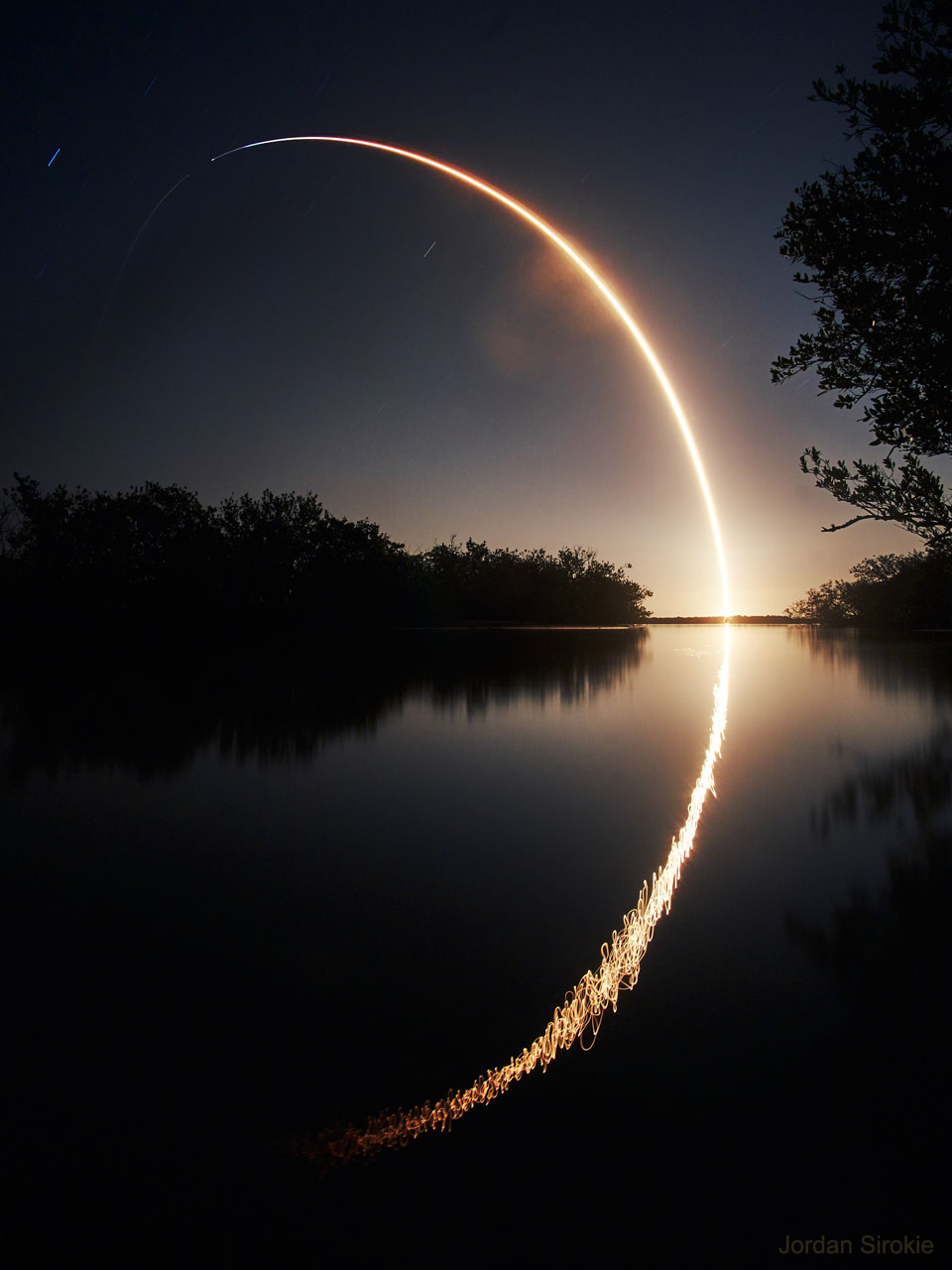IXPE天文台发射升空
2021年12月22日
Launch of the IXPE Observatory
Image Credit & Copyright: Jordan Sirokie
Explanation: Birds don’t fly this high. Airplanes don’t go this fast. The Statue of Liberty weighs less. No species other than human can even comprehend what is going on, nor could any human just a millennium ago. The launch of a rocket bound for space is an event that inspires awe and challenges description. Pictured here, a SpaceX Falcon 9 rocket lifted off from Kennedy Space Center, Florida earlier this month carrying the Imaging X-ray Polarimetry Explorer (IXPE). IXPE is scheduled to observe high-energy objects such as neutron stars, black holes, and the centers of distant galaxies to better determine the physics and geometries that create and control them. From a standing start, the 300,000+ kilogram rocket ship lifted IXPE up to circle the Earth, where the outside air is too thin to breathe. Rockets bound for space are now launched from somewhere on Earth every few days.
Launch Update: James Webb Space Telescope
Tomorrow’s picture: open space
IXPE天文台发射升空
影像提供与版权: Jordan Sirokie
说明: 鸟类没飞这么高,飞机没飞这么快,自由女神像也没它重。除了人类之外,其他地球物种无法了解发生了什么事。事实上,近在一千年前的人类也无法理解它的用途。太空载具火箭的发射,通常会引发观众的惊叹,并挑战他们描述感受的能力。上面这张影像记录了这个月稍早,太空探险公司猎鹰9号火箭从火国.佛罗里达州甘迺迪太空中心升空,载送成像X射线偏振探测器天文台(IXPE)前往地球轨道的情景。IXPE设定的目标是要观测高能天体,诸如:中子星、黑洞、和遥远星系的星系核,以增进对造就和控制它们的物理及几何环境有更精确的掌握。从静止状态启程后,这部超过300,000公斤的火箭,把IXPE天文台推送到空气极端稀薄的绕地球轨道上。现在几乎每隔几天,就会有一艘火箭自地球表面的某处发射前往太空。
发射更新:詹姆斯·韦伯太空望远镜
明日的图片: open space

